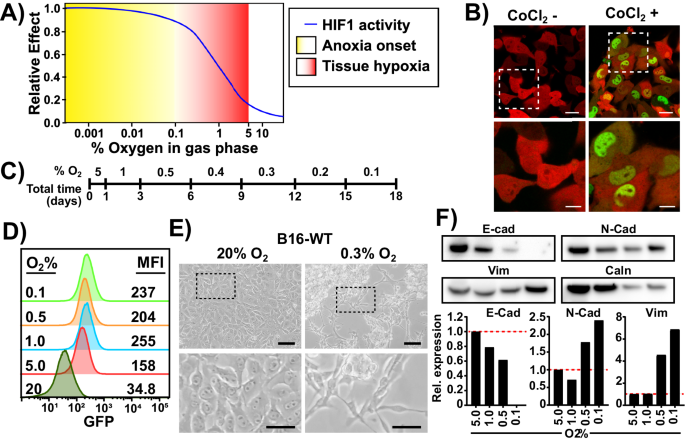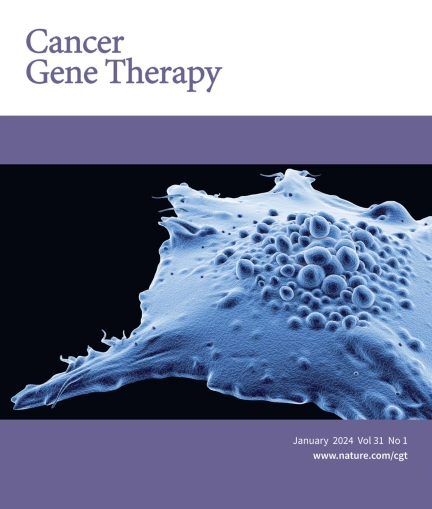Long-term severe hypoxia adaptation induces non-canonical EMT and a novel Wilms Tumor 1 (WT1) isoform
IF 4.8
3区 医学
Q1 BIOTECHNOLOGY & APPLIED MICROBIOLOGY
引用次数: 0
Abstract
The majority of cancer deaths are caused by solid tumors, where the four most prevalent cancers (breast, lung, colorectal and prostate) account for more than 60% of all cases (1). Tumor cell heterogeneity driven by variable cancer microenvironments, such as hypoxia, is a key determinant of therapeutic outcome. We developed a novel culture protocol, termed the Long-Term Hypoxia (LTHY) time course, to recapitulate the gradual development of severe hypoxia seen in vivo to mimic conditions observed in primary tumors. Cells subjected to LTHY underwent a non-canonical epithelial to mesenchymal transition (EMT) based on miRNA and mRNA signatures as well as displayed EMT-like morphological changes. Concomitant to this, we report production of a novel truncated isoform of WT1 transcription factor (tWt1), a non-canonical EMT driver, with expression driven by a yet undescribed intronic promoter through hypoxia-responsive elements (HREs). We further demonstrated that tWt1 initiates translation from an intron-derived start codon, retains proper subcellular localization and DNA binding. A similar tWt1 is also expressed in LTHY-cultured human cancer cell lines as well as primary cancers and predicts long-term patient survival. Our study not only demonstrates the importance of culture conditions that better mimic those observed in primary cancers, especially with regards to hypoxia, but also identifies a novel isoform of WT1 which correlates with poor long-term survival in ovarian cancer.


长期严重缺氧适应会诱导非典型EMT和一种新型Wilms Tumor 1(WT1)同工酶。
大多数癌症死亡都是由实体瘤造成的,其中最常见的四种癌症(乳腺癌、肺癌、结肠直肠癌和前列腺癌)占所有病例的 60% 以上(1)。由缺氧等可变癌症微环境驱动的肿瘤细胞异质性是决定治疗结果的关键因素。我们开发了一种称为长期缺氧(LTHY)时间过程的新型培养方案,以重现体内严重缺氧的逐渐发展过程,从而模拟原发性肿瘤中观察到的条件。根据 miRNA 和 mRNA 标识,受 LTHY 影响的细胞经历了非典型的上皮向间充质转化(EMT),并表现出类似 EMT 的形态学变化。与此同时,我们报告了一种新型截短异构体 WT1 转录因子(tWt1)的产生,它是一种非典型的 EMT 驱动因子,其表达是由一个尚未被描述的内含子启动子通过缺氧反应元件(hypoxia-responsive elements,HREs)驱动的。我们进一步证实,tWt1 从内含子衍生的起始密码子开始翻译,并保持适当的亚细胞定位和 DNA 结合。类似的 tWt1 也在 LTHY 培养的人类癌细胞系和原发性癌症中表达,并可预测患者的长期生存期。我们的研究不仅证明了更好地模拟原发性癌症培养条件的重要性,尤其是在缺氧条件下,而且还发现了一种新型的 WT1 同工型,它与卵巢癌患者长期生存率低有关。
本文章由计算机程序翻译,如有差异,请以英文原文为准。
求助全文
约1分钟内获得全文
求助全文
来源期刊

Cancer gene therapy
医学-生物工程与应用微生物
CiteScore
10.20
自引率
0.00%
发文量
150
审稿时长
4-8 weeks
期刊介绍:
Cancer Gene Therapy is the essential gene and cellular therapy resource for cancer researchers and clinicians, keeping readers up to date with the latest developments in gene and cellular therapies for cancer. The journal publishes original laboratory and clinical research papers, case reports and review articles. Publication topics include RNAi approaches, drug resistance, hematopoietic progenitor cell gene transfer, cancer stem cells, cellular therapies, homologous recombination, ribozyme technology, antisense technology, tumor immunotherapy and tumor suppressors, translational research, cancer therapy, gene delivery systems (viral and non-viral), anti-gene therapy (antisense, siRNA & ribozymes), apoptosis; mechanisms and therapies, vaccine development, immunology and immunotherapy, DNA synthesis and repair.
Cancer Gene Therapy publishes the results of laboratory investigations, preclinical studies, and clinical trials in the field of gene transfer/gene therapy and cellular therapies as applied to cancer research. Types of articles published include original research articles; case reports; brief communications; review articles in the main fields of drug resistance/sensitivity, gene therapy, cellular therapy, tumor suppressor and anti-oncogene therapy, cytokine/tumor immunotherapy, etc.; industry perspectives; and letters to the editor.
 求助内容:
求助内容: 应助结果提醒方式:
应助结果提醒方式:


